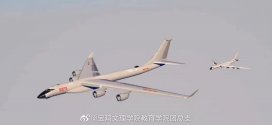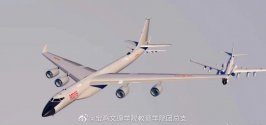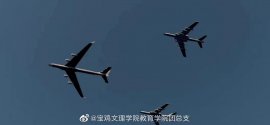Interesting find from the history archive.
Xi'an H-6I bomber after successfully conducting its maiden flight in 1978. H-6I is basically H-6 but with an extra two engines (Rolls Royce Spey Mk 512) on pylons of each wing.
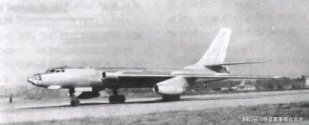
Artist illustrations of the Xi'an H-8 bomber deisgn proposals as successor to the Xi'an H-6 bomber but was never built.
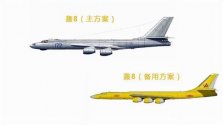
Main design solution for H-8 would be powered by 4 WS-6J engines, with the backup design solution powered by 6 WJ-6J engines or Pratt & Whitney JT-3D engines. None were ever built, however.
Had H-8 been put into mass production in the 1980s or 1990s instead of continuing with the H-6 series, China would be able to comfortably cover Guam and Darwin from mainland bases, or even Diego Garcia from bases in the South China Sea. Achieving that of all without refueling, and thus, expanding China's anti-ship and anti-base aerial umbrella even further than what we are having right now.
It's a shame that China didn't pursue this project any further than paper drawings. H-8 could very well be analogus to the B-52 and Tu-95 (albeit with inferior performance), and would be perfect in playing similar roles of complementing the upcoming Xi'an H-20 stealth bombers compared to the H-6.
Xi'an H-6I bomber after successfully conducting its maiden flight in 1978. H-6I is basically H-6 but with an extra two engines (Rolls Royce Spey Mk 512) on pylons of each wing.

Artist illustrations of the Xi'an H-8 bomber deisgn proposals as successor to the Xi'an H-6 bomber but was never built.

Main design solution for H-8 would be powered by 4 WS-6J engines, with the backup design solution powered by 6 WJ-6J engines or Pratt & Whitney JT-3D engines. None were ever built, however.
Had H-8 been put into mass production in the 1980s or 1990s instead of continuing with the H-6 series, China would be able to comfortably cover Guam and Darwin from mainland bases, or even Diego Garcia from bases in the South China Sea. Achieving that of all without refueling, and thus, expanding China's anti-ship and anti-base aerial umbrella even further than what we are having right now.
It's a shame that China didn't pursue this project any further than paper drawings. H-8 could very well be analogus to the B-52 and Tu-95 (albeit with inferior performance), and would be perfect in playing similar roles of complementing the upcoming Xi'an H-20 stealth bombers compared to the H-6.

